Please click on images 2 – 9 to view clip
Let me begin with a hypothesis: that the cinema, more effectively than photography or painting, allows us to experience the two-way passage between day and night. This is an obvious result of cinema’s status as a medium operating in time. The cinematic night, at any given moment of its representation, will always be at one point in transitions enacting the arrival of the night or its dissolution. This temporality of the cinematic night is one of the challenges facing those who attempt to define a cinematic nocturne. When films show us the night arriving, displacing the constituent features of the day, or disappearing in the face of daylight’s slow intrusion, which points in such transitions might be considered examples of a cinematic nocturne? Is the nocturne to be found merely in those moments in which the sovereignty of the night is complete? Or does the cinematic nocturne include all those moments of transitions in which the sensory markers of the night are being assembled (at nightfall) or made to dissipate (at night’s end)?
To pose the question in this way is to pursue – and, perhaps, adapt for slightly different purposes – the choice offered by Judith Langendorff, who invites us to decide whether the nocturne is an atmosphere or a dispositif[1. If the nocturne is an atmosphere, we may clearly point to moments in cinema in which that atmosphere is most fully realized in an almost measurable sense – when, for example, the elements of day have been fully expelled or when none of them have yet arrived. If, however, the nocturne is a dispositf, we may conceive it as a distributive machinery, dispersing signifiers of the night across points in space and moments in time, in sequences which capture the fluctuating mutability and only occasional “completeness” of the night.
The single-night narrative
In a vast corpus of films, the passage from day to night, and from night to day, serves to organize and frame the entirety of a film’s narrative. Vendredi soir (2002), by Claire Denis, begins as night slowly settles, like a blanket, upon Paris. Then, at the film’s end, the light of early morning invades the bedroom in which the main character is sleeping. At the beginning of Who’s Afraid of Virginia Woolf (1966; dir. Mike Nichols), night has just fallen as an older couple walks towards the house of the younger couple with whom they will spend the evening. In the final moments of the film, the light of dawn slowly infiltrates the house in which the older couple reside, and to which they have returned.
The first minutes of Vendredi Soir show us the Parisian night as it constitutes itself. The green-grey surfaces of buildings at dusk slowly give way to red-blue cityscapes as sunlight first saturates the horizon, then disappears. The nocturne, here, takes shape as a sequence of shifting visual tones transforming a relatively stable section of the built environment outside the main character’s window. At the beginning of Who’s Afraid of Virginia Woolf, in contrast, we are already in the fullness of the night. Following the brief image of a full moon, the camera moves across the dark space of a university’s residential quarter to “find” the house from which one of the film’s married couples emerges. As they walk the short distance to another house, in which the film’s narrative will unfold, the pathway of their nocturnal movement, full of large trees and deep shadows, evokes the grand manteau sombre which, in Paulette Choné’s words, is one version of the visual nocturne2. In Vendredi soir, the cinematic nocturne is organized as a set of transitions; in Who’s Afraid of Virginia Woolf, it is a fully-formed atmosphere.
In the conclusions to these two films, we find an additional contrast between two of the common ways in which morning brings narrative resolution. In Vendredi Soir, the morning light causes the central character to rise up from her bed and run into the full sunlight of the early morning streets. The coming of the day brings an assumption of joyous liberation which confirms that night’s end has brought the possibility of a new beginning. In Who’s Afraid of Virginia Woolf, morning brings instead what novelist Marie-Claire Blais has called the “monotone arrival of the advancing day3” – a slow expulsion of night-time atmospherics and their replacement by a gray flatness which lays bare the empty reality of the central couple’s damaged lives and marriage.
Vendredi soir and Who’s Afraid of Virginal Wolf are both examples of what, elsewhere, I have called cinematic “single-night narratives” – that is, films which take place over the course of a single night4. I begin with them in part to suggest that, while the passage between day to night (in either direction) is often little more than a useful narrative transition in films, it may also serve as a formal device by which certain films bind the entirety of their narrative arcs to the natural cycle of circadian rhythms.
Day-night transitions and the cinematic credit sequence
The single-night narrative in film draws on much longer traditions of literary narrative in which stories unfold in the course of a single night5. My principal interest in this article is directed toward a different formal unity, one which is more exclusive to the cinema. This unity is the credit sequence which enacts the passage from day to night or from night to day within its temporal boundaries. While such sequences are rare, there are enough of them to constitute a small corpus.
The eight examples discussed here will allow us to explore some of the ways in which the arrival or dissipation of the night has served to organize short, self-contained exercises of cinematic style and atmosphere. These exercises use the time of the credit sequence, with its prescribed succession of titles, as a formal constraint allowing for experiences of time and transition which are often distinct – in their pace, tone and visual rendering of fictional worlds – from the larger films of which they are a part. These sequences are useful to an understanding of the cinematic nocturne in at least two ways.
In the first place, as relatively self-contained sections of films devoted to the fulfilment of what we might call an institutional purpose – the identification of the key personnel involved in making the film – these sequences are able to indulge in visual exercises of limited narrative value. Night-time cityscapes, journeys along roads at dusk or dawn, and fragmentary views of an environment at different points in the 24-hour cycle all serve as suitable visual backdrops for the passing of printed titles on the screen. In many cases, as well, such sequences are simultaneous with the performance of a film’s key musical themes. This overlaying of music, textual information and aestheticized landscapes makes the credit sequence into what film theorist George Stanitzek has called (using the language of rhetoric) an epideixis: “an exuberant cinematic celebration6”.
At the same time, credit sequences are often characterized by the absence of narratively significant human interaction. As if to compensate for this absence, credit sequences will often indulge in an extended look upon landscapes of all kinds. This is one reason why credit sequences have contributed in a significant fashion to the elaboration of images of the mysterious nocturnal city, through the extended gaze on such environments to be found as the credits unfold in such films as The Frightened City (1961; dir. John Lemont), Sette orchidee macchiate di rosso (English title Seven Blood Stained Orchids; 1972; dir. Umberto Lenzi), La Nuit Venue (2019; dir. Frédéric Farruci) or Maigret à Pigalle (1966; dir. Mario Landi). More generally, we might say that, more than other sections of feature films, credit sequences will engage in the elaboration of atmospheric representations of place and landscape. These representations will often draw upon older traditions of the painterly or photographic nocturne. This is the case for example, of the film The Night and the City (1950; dir. Jules Dassin), whose credits appear over cinematic images which resemble nineteenth centuries paintings of London at night (fig. 1).
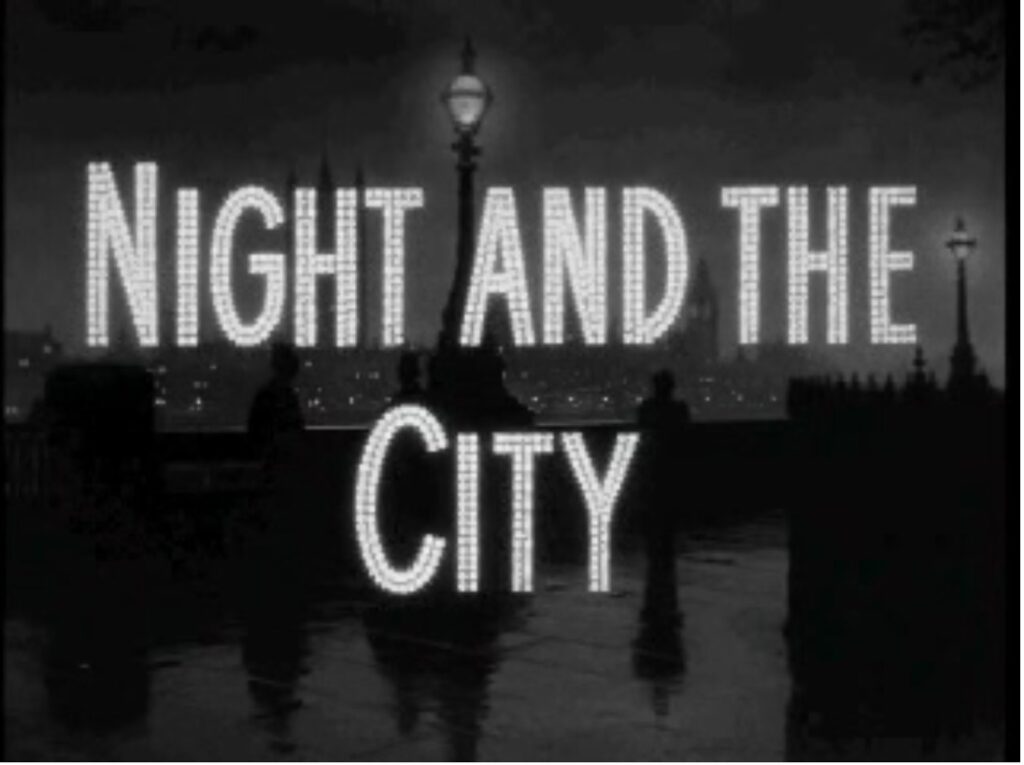
Fig. 1. The title image for The Night and the City (1950; dir. Jules Dassin)
The examples to be discussed in this article are credit sequences from films released between 1959 and 1970. This periodization was not a criteria I had imposed a priori, but as I sought examples among the credit sequences of several hundred films, those which contained transitions between day and night, or night and day, were almost all from this period. These years, as is well-known, represent a golden age of sorts in the history of the credit sequence. In this era, we see the completion of a process which had been underway since the late 1940s, in which the credit sequence moved away from its intermedial links to the book, the theatrical curtain, or commercial signage. In the 1960s, as credit sequences more and more wrote themselves over spaces of diegetic action, they became the occasion for mannerist displays of audiovisual bravura, for exercises in visual style whose complexities very often surpassed those of the films which surrounded them. Certain well-known features of credit sequences in the 1960s – their extended duration, their frequent use of a song as sonic backdrop –encouraged an indulgence in sequences of movement or transition whose narrative importance was often minimal. The passage from day to night – or of night to day – offered itself as one such transition.
I will begin by examining four films whose credit sequences represent the passage from day to night: the American films The Sandpiper (1965; dir. Vincente Minelli), the French Asphalte (1959; dir. Hervé Bromberger), the Japanese film Toba no mesu neko (The Cat Gambler) (1965; dir. Hiroshi Noguchi), and the American Something Wild (1961; dir. Jack Garfein). Each of these sequences begins in daylight and concludes amidst darkness.
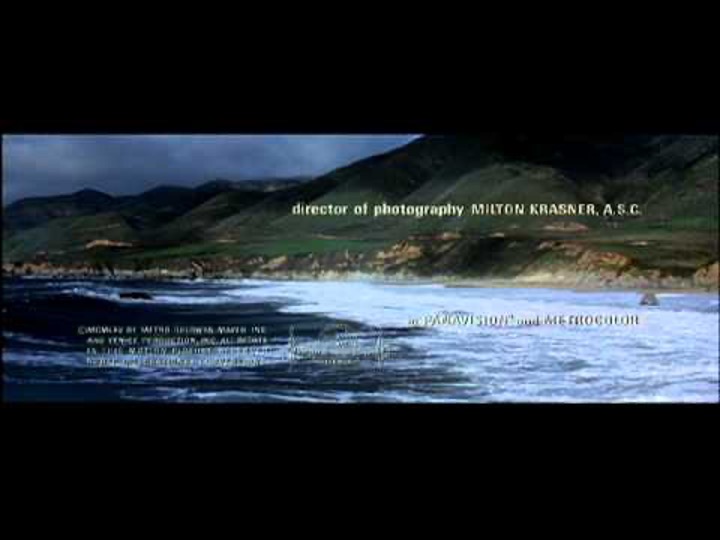
Fig. 2. The Sandpaper (1965), directed by Vincente Minelli.
From the identification of its studio through the appearance of the director’s name, the credit sequence to The Sandpaper is 3 minutes and 5 seconds in length (fig. 2). What might we say about the gratuitous extravagance of a credit sequence which lasts so long but shows us no people, which says so little of the film to follow. In a convention typical of its time, the length of the credit sequence is made to accommodate the presentation of a song, “The Shadow of Your Smile,” which would become a great success on radio and in recordings. But if the length of the sequence justifies the inclusion of a song, the song in turn dictates the duration of this sequence, and so the written credits unfold slowly, in order that they not be extinguished before the song ends.
The visual content of this sequence must find its own way of enduring the same period of time. For almost the entirety of its three minutes, this sequence finds the camera gliding around the rocky shoreline of the Californian coast, rising high in some moments to offer a panoramic view of large sections of landscape, and descending in others to capture the shape of rolling fields or waves crashing on a beach.
We might see much of this sequence as simply an elaborate compendium of what are commonly called establishing shots, one which identify, contemplate and, in a sense, “describe” a landscape. For the camera simply to linger on this landscape over three minutes would come to seem excessive, however, and so the credit sequence moves, in its final minute, to introduce a sense of temporal succession. As the sequence arrives at its conclusion, we see the sky turn dark, then orange, with the setting of the sun. The camera, which has been mobile, settles into a stationary position on the beach just as the appearance of the director’s name ends the credit sequence. Evening has arrived, signalled by the sequence’s concluding image of a horizon line below which the sun has receded.
The Sandpiper’s narrative does not begin at day’s end, however. After the credits conclude, the film jumps back to daytime, to a scene in which the character played by Elizabeth Taylor stands, painting a picture, on a sun-lit beach. The passage from daylight to twilight has meaning only in the context of the credit sequence itself, upon which it imposes a logic of temporal progression, naturalizing its conclusion by tying it to the end of the day. We might say that the night, in this credit sequence, brings with it a crescendo of feeling sufficient for it to end the credit sequence in what feels like a satisfying fashion. Even as the orange landscapes of a beach at sunset offer their own forms of pictorialist pleasure, they leave us with the sensation that, now, human action and narrative must arrive in the film, to take over from a sequence which no longer has anywhere to go.
The opening of The Sandpiper, we might say, uses the visual transition to night as a way of naturalizing the duration of the film’s key paratexts (its credits and theme song), just as these paratexts use the arrival at the night as a further rationale for their own, simultaneous exhaustion. The coming of night here is experienced as the conclusion of a process, the completion of a natural cycle, and it therefore seems logical that the song and printed credits come to a rest in the same moment.
As in painting and other visual media, varieties of the cinematic nocturne may be distinguished according to whether the night appears as “heavy” – a substance which descends upon the earth to devour form, as Caroline Renard has suggested7 – or, following Aumont, as weightless, in the ways in which the shadows and reflections produced in the night loosen bodies (and non-human forms) from the force of gravity8. As the night arrives, near the conclusion to the credit sequence of The Sandpiper, darkness closes in around a landscape which, in the daytime sequences which preceded these final shots, seemed to be a boundless space through which the camera could roam, unconstrained. In the final seconds of this credit sequence, the landscape becomes immobile, weighty, and even the lingering light of sunset is extinguished. The screen goes black before opening onto a daytime beach full of the busy movements of birds and waves, whose energies signal the initiation of narrative.
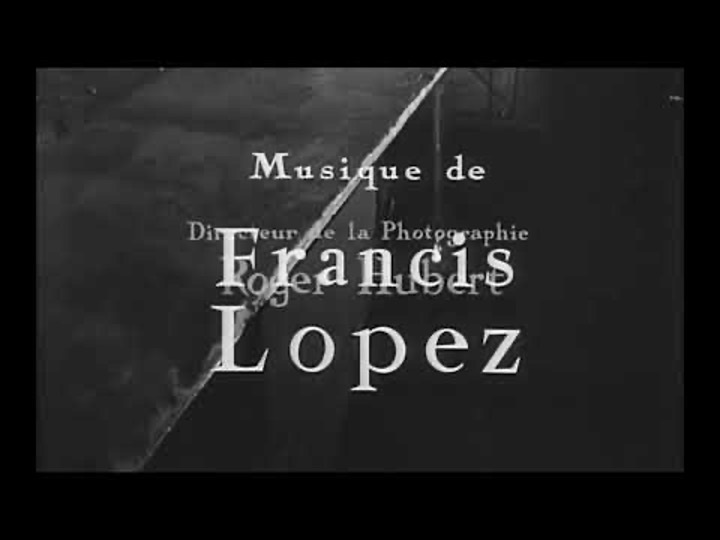
Fig. 3. Asphalte (1959), directed by Hervé Bromberger.
The credit sequence for the French film Asphalte is (at 2’4”) shorter than that of The Sandpiper, but the narrative time represented follows the film’s main character over several years, in her maturation from young girl to adult woman (fig. 3). This is accomplished through a series of dissolves, which show the character moving along the same street at different phases of her life, with only her feet and legs visible. The movement from childhood to adulthood is doubled, in this sequence, by the passage from day to night. Night, here, represents the conclusion of a process but the beginning of narrative. The passage to adulthood within the credit sequence traces the passage from childhood to an adult female sexuality, represented in increasingly fetishized fashion by the changing of shoes and the emergence of a sexualized female leg in the sequence’s later moments.
This sequence repeats a pattern common in films of the two decades following World War II, in which we move from a daytime seen through the conventions of the urban social problem film, with its images of slums and smoke, to the clichés of one version of the cinematic urban nocturne. At the end of this sequence, the streets sparkle with rain and reflect night-time illumination, and the act of walking gives way to a series of nocturnal rides in a taxi, signalled by the variety of festive destinations indicated on the vehicle’s meter. Near the end of the sequence, we return to an image of the woman’s legs, as these move along the street beside those of a male companion. Only when the credit sequence ends does the camera rise to show us the woman (and her companion) in full-form.
The Sandpiper arrived at night only in the final moments of its credit sequence, using the night as the pretext for a fade to black which concluded these credits and formalized their separation from the rests of the film. The credits of Asphalte, in contrast, must arrive at the night in order for the film to find its story. It is in the atmospheric territory of the night that the elements of narrative (adult bodies in sexualized situations) are discovered, then set loose to initiate the story which follows. Arrival in the night, however, is more than just one stage in the maturation process of the film’s main character. This arrival is that point at which the film enters the stylized night-time world in which the sort of story which will unfold – one of adult emotions and sensations – is possible. We might say, of this sequence, that it works to “deliver” its main character, fully mature, and therefore ready to assume narrative agency, into the stylized territory of the night.
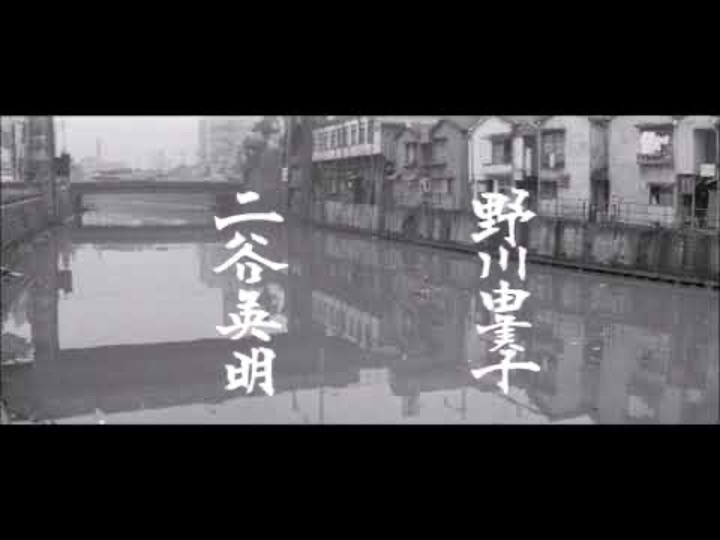
Fig. 4. Toba no mesu neko (English title The Cat Gambler) (1965), directed by Hiroshi Noguchi).
The opening credit sequence to the 1965 Japanese film Toba no mesu neko (English title The Cat Gambler, fig. 4) comes to the night through a series of dissolves of more or less static images of city locations. These views of diurnal urban space are accompanied by a song. The use of gentle dissolves takes us through various stages of the day and across a variety of city spaces, but only towards the end do we see a perceptible darkening of tone, as we move towards the night. The song ends roughly ten seconds before the conclusion of the credits, just as the film has moved into a time which is clearly that of the night. In these final seconds, and as the final credit appears, the melodic title song gives way to a suspenseful orchestral passage signalling the beginning of a narrative of crime and intrigue – an acknowledgement of the film’s genre otherwise absent from most of the credit sequence. Having explored the city, the credit sequence finds the space of its narrative action – run-down waterfront gambling places – and arrives at these places only when it has arrived at the night. Here, as in Asphalte, the film’s movement into the night enacts its movement into the beginning of narrative.
The images of daytime city life which precede this move into the night feel, in a sense, as if the film is killing time, offering up visual content to fill the screen while the credits and theme song fulfill their expected functions. We might see this series of day-time views as a set of soft transitions in the way Julia Boncorrsi, writing of something quite different, has described these9. They recall images we see in certain opening sequences of an earlier period, when the pages of a book were turned so as to present a film’s credits in a fashion more fluid than the standard displacement of one title card by another10. In The Cat Gambler, the soft dissolves between different moments of the disappearing day maintain our interest at a low level, until the arrival of night envelops the city in an all pervasive dark blanket and the first signs of narrative intrigue become perceptible.
Here, too, as with Asphalte, we might reflect upon a mode of organization which shows us so much of the day in order to arrive at a night in which narrative action will take flight. Both the written credits and the song in The Cat Gambler require, for their unfolding, an extended visual sequence of limited narrative purpose. The slow movement of the credit sequence through the day fulfills that purpose, particularly insofar as the variety of locations and things seen – the buildings, vehicles, waterways, groups of people – seem to have little to do with each other. As well, these images of the day do not seem bound to any specific temporality; they are not in any discernable sequence, nor do we assume that the urban day we are seeing is the specific day preceding the night in which the film’s narrative action begins.
With the coming of night, however, things cohere to produce a uniform atmosphere. With the coming of darkness, the relationship between water and buildings is transformed, with light from the latter reflecting on the former to enact a merging of forms. As well, after the uncertain temporally of the day-time scenes, the night at which we arrive is a specific night, the time in which actions will succeed each other in a causal fashion. We might say, then, of the credit sequence to The Cat Gambler, that, as in Asphalte (but not in The Sandpiper), the thickly atmospheric night arrives as a substance binding together characters, locations and action, overcoming the spatial dispersion and uncertain temporalities of the day-time sequences and making narrative possible.
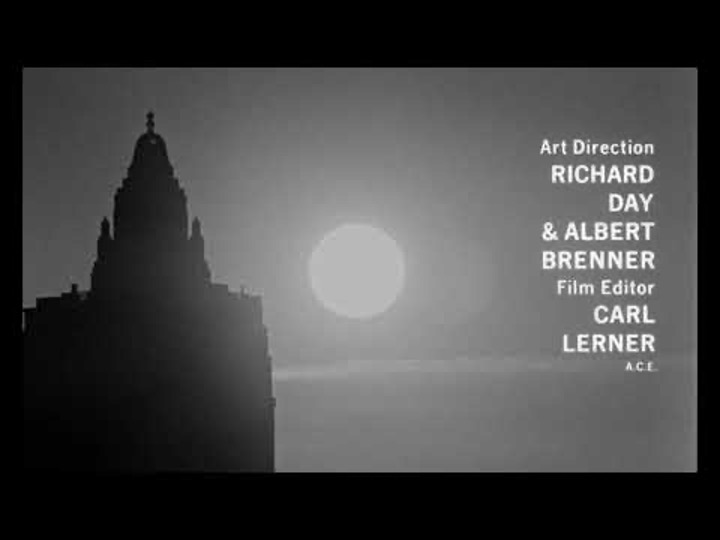
Fig. 5. Something Wild (1961), directed by Jack Garfein.
The credit sequence of the 1961 American film Something Wild is attributed to the well-known designer Saul Bass. This sequence is self-consciously artful and heterogeneous in the materials it employs. It has almost nothing to do, in its style and tone, with the film which follows, which is the story of a woman reacting to the experience of being raped. The credit sequence moves broadly from day to night, though the linearity of this transition is not absolute. There are scenes early in the credit sequence whose shadowy surfaces might suggest the night, though once we have moved more fully and obviously into the night – at that point, almost exactly half-way into the sequence, in which we see a glowing orb (the setting sun or ascendant moon?) – we are unambiguously in the night and will remain there until the sequence concludes (fig. 5).
The daytime scenes with which this credit sequence opens are of a sort familiar in documentary or poetic treatments of the alienation of modern urban life, offering images of flat, imposing buildings and insect-like crowds on city streets. Once the moon has intruded upon the sequence, however, the cacophonic sounds of the daytime and images of busy human movement seem to be banished. The sequence moves into a brief period of twilight and almost pastoral night-time silence. Almost immediately, however, noise and busy movement are regenerated, but these are now the sounds and images of the urban night. The music assumes a frantic pace and tone which exceed those of the busy daytime, while, metonymically, the moon appears to summon a series of images of illuminated, mobile advertising. These images are slowly transformed into a kaleidoscopic set of swirling circles which eventually come to stand for a moving subway car. The sequence concludes by arriving at a night-time subway station, from which the film’s central character will emerge and its narrative begin.
The four sequences discussed this far all begin with the day to conclude in the night. In all four, the day is represented in images which are outside of any narrative time, more obviously intended to convey a “typicality” of diurnal life in its natural or urban varieties. Arrival in the night, in all four cases, is the arrival at a temporal fixity. In Asphalte, The Cat Gambler and Something Wild, this fixity fastens down the specific moments in which the film’s narratives will commence. In The Sandpiper, in contrast, the coming of the night does not serve to launch the film’s narrative. With its arrival, nevertheless, the camera ceases to signal change in a purely spatial sense, through the shifting of perspectives and movement around a landscape. In its final moments, the camera lingers on a single setting (a beach) and allows the passage of time to alter that setting through the congealing of the night around and upon it. Here, too, the night, as a weighty substance, arrests the loose meandering of the camera which has preceded its arrival, locking the film into a linear temporality which its story will follow.
Night to day
In credit sequences which enact the passage from night to day, we find a set of different logics in operation. I shall explore these logics briefly through an examination of the credit sequences of four films: the Italian-French co-production Tecnica di un omicidio (Professional Killer) (1966; dir. Francesco Prosperi); the French thrillers Solo (1970; dir. Jean-Pierre Mocky) and Fleur d’Oseille (1967; dir. George Lautner); and the French documentary Mourir à Madrid (1963; dir. Fréderic Rossif.)
The most important of these logics is that which renders the dissipation of the night a long process. While day-to-night credit sequences may conclude in the very depth of the night, it is rare for those credit sequences focussed on the transition from night to day to show us either night or day in the moments of their fullness. With one exception (the first example, from Tecnica di un omicidio), the examples shown in this section devote almost the entirety of their duration to a long transition which begins when night has already begun to dissipate and ends while the transformations which come with morning are still incomplete.
A second logic follows from this fixation on transition. In their focus on settings (rural landscapes, the entrances to cities, small towns) which are made visible by the first tentative and incomplete appearances of daylight, these sequences are effective at capturing the complexity of atmospheres. Elemental or meteorological features like mist, clouds, pollution and rain are commonly features of the visual field in these sequences. These features often appear to conceal the full arrival of morning ,leaving us unclear whether we are still in the final moments of night or in a morning which has not yet been able to break through those environmental phenomena which delay its visibility.
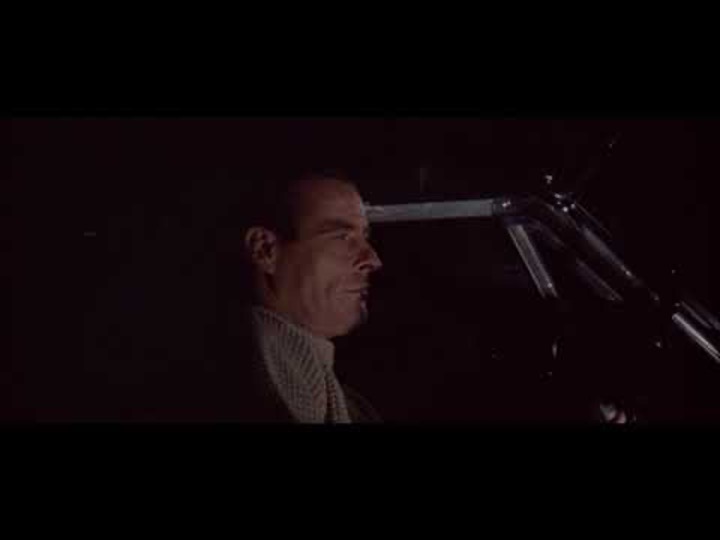
Fig. 6. Tecnica di un omicidio (1966), directed by Francesco Prosper
In the credit sequence of the European crime film Tecnica di un omicidio (1966; dir. Francesco Prosperi), we watch a professional assassin drive into New York City on a homicidal mission established in an extended pre-credit sequence (fig. 6). As I have argued elsewhere, the credit sequence in which a man drives alone at night had become, by the 1950s, one of the principal cinematic means for conveying a sense of enigmatic masculinity11. Alone and silent, contemplating a barren and changing landscape, the male figure of this sort cannot help but accrue to himself a sense of characterological depth.
However contrived this sequence might appear – put together, no doubt, with studio shots of its main character in a stationary automobile and second unit footage of highways – it nevertheless offers a rich variety of ways of representing the night. Indeed, of the four sequences discussed in this section, Tecnica di un omicidio is the only one of which we might say that it indulges fully, at least in its first half, in recognizable versions of the cinematic nocturne. As the film’s titular character drives along night-time highways, through the peripheral sections of his destination, New York City, we are shown what Anne Cauquelin has called the “thing” city, the city of monuments, bridges and signs, visible only in the points of illumination which mark their outlines12. These moments also highlight the features of what Armangaud has called the infrastructural or networked city13, revealed in the lines of connection, like guardrails and strings of lighting, which stand out against the darkness which surrounds them.
Half-way through this sequence, as the car approaches Manhattan at dawn, lights appearing as pinpoints give way to the solid structures of bridges and the blurred image of buildings. More importantly, these first views of Manhattan are seen as if through a hazy cloud, whose uncertain composition might include the lingering vestiges of night and the atmospheric effects of pollution and water. The scene concludes as these atmospheric traces are banished by the expanding sunlight and as the automobile moves along the familiar features of the New York skyline. In strictly linear fashion, the opening credit sequence of Tecnica di un omicidio has taken us from outside the city to a point within it, and from the fullness of night into the beginnings of the day. Beginning amidst well-established features of the cinematic nocturne, it makes the dissipation of those features coterminous with the character’s arrival at his destination and the film own arrival at that moment in which its storyline may resume.
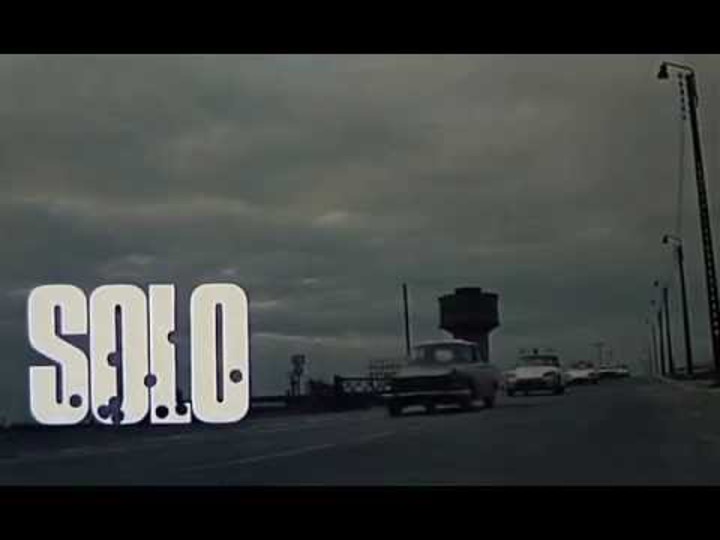
Fig. 7. Solo (1970), directed by Jean-Pierre Mocky.
The credit sequence to Solo begins as night has almost entirely disappeared (fig. 7). We are in the early dawn, as police rush to the site of a horrific crime that happened within the night (and is seen in a pre-credit sequence.) That this is morning is confirmed by the image of one policeman eating a croissant as he drives (and by the indications of temporality provided after the credit sequence has ended.) As the men drive, atmospheric music, with vocals but no words, accompanies the credits. The sight of cars driving might be enough to hold viewer attention, but the transition between stages in the awakening of the day helps to aestheticize unattractive landscapes, just as the first of the credits appear in the form of lights intended to add brightness to the screen.
The duration of this transition, between night and day, is brief, and the atmosphere sustained throughout this sequence is one of a drab, grey early morning with few remaining traces of night and little anticipation of the day to come. The sense conveyed, of an early morning without promise, is doubled in the images of a barren geographical placelessness through which the automobiles travel. The overwhelming effect is one of men with burdensome responsibilities en route to perform grim duties for which their lives have hardened them.
The dawn, French sociologist Pierre Sansot once wrote, compels men to assume their responsibilities14. Sansot is presumably speaking of all human beings, not simply men, but his observation invites us to consider the gendered character of transitions between day and night, night and day. I had already chosen the corpus of credit sequences to be examined here before I realized that all of those enacting the transition from day to night carried us toward narratives in which women were central characters. Likewise, those sequences centred on the passage from night to day were from films centred on male characters condemned to certain gruesome fates or duties. The transition from day to night is often a movement towards figures of femininity, towards a darkness in which sexualized narratives takes form with these figures as central narrative agents The movement towards the dawn in film is very often masculinized, rendered as the assumption of responsibility or capitulation to a fate, typically involving infractions of the law.
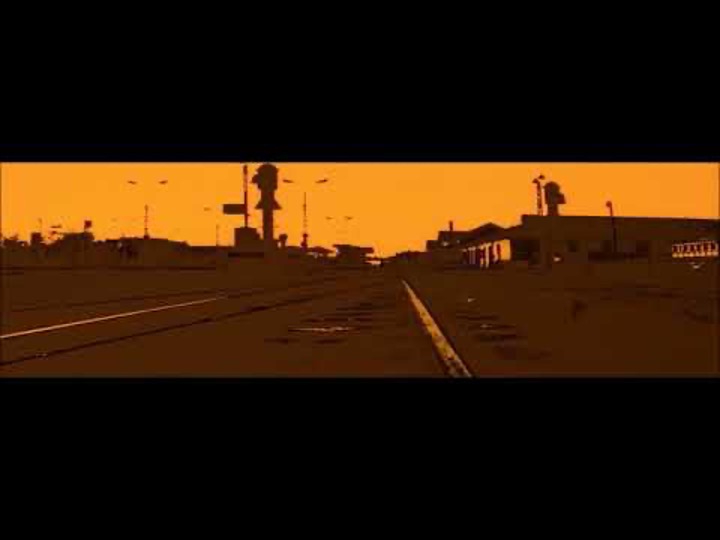
Fig. 8. Fleur d’oseille (1967), directed by Georges Lautner.
This understanding of the early morning as the time of a man’s rendezvous with fate is evident in the opening to the 1967 French film Fleur d’oseille. With minor exceptions near its conclusion, no human figures are visible in this sequence, though a man will be killed shortly after the credit sequence ends, and other characters will assume agency in the film’s narrative. The credit sequence suggests (and simulates, in an experimental manner) the passage from night to dawn on the site of a small-town railroad station (fig. 8). The yellow and orange colours which mark some of the images are at least obliquely those of sunrise, and the images of a grey or blue dawn which briefly interrupt them on several occasions seem to both show us the same locations in an untouched state and to look forward, anticipating the morning which will have fully arrived by the time the sequence ends.
Like many of the credit sequences here, this one builds a sense of temporal progression and anticipation into what is otherwise a contemplation of space or landscape. As the credits pass, we wait for the morning to reveal itself in its fullness, and for the colour palette of the sequence to return to one more normal and legible. Because we are viewing an unpopulated space we wait, as well, for the arrival of the people who will make narrative progression possible. To set this sequence in early morning is to exploit the associations noted by Sansot, between daybreak and the confrontation with fate, though this understanding is largely retroactive. To show the slow arrival of the day is also a means by which, while looking at a space without people or movement, we are made to feel a sense of passing time.
« Lorsque le jour s’installe, » writes Baldine Saint Girons, « les êtres et les choses projettent des ombres précises et peuvent apparaître comme des horloges solaires qui indiquent les heures15 ». Although it is empty of people, the credit sequence to Fleur d’oseille functions at one level as one of Saint Girons’ solar clocks, marking off the passage of time until the moment – just after the credit sequence – in which narrative events will assume that function.
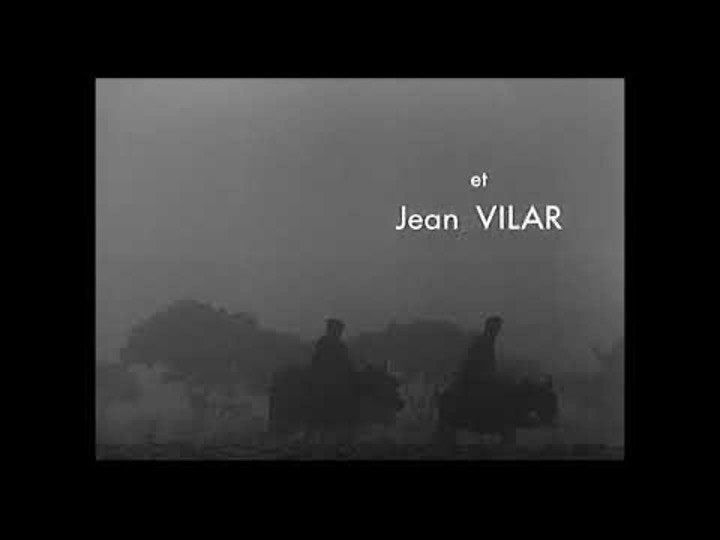
Fig. 9. Mourir à Madrid (1963), directed by Fréderic Rossif.
The last credit sequence to be examined here comes at the beginning of the French documentary film Mourir à Madrid, a film which deals in part with the plight of agricultural workers in the Spanish region of Somosierra. We learn, from the narration accompanying similar images at the end of the film, that we are witnessing the long journeys taken each morning as these workers go to their places of work. At a formal level, this sequence offers a literal version of the metaphor embedded in the German term Vorspann, which designates both film credits and the movement of a “draft horse harnessed to a cart16” (fig. 9). The journal of the workers to their destinations, astride their animals or walking alongside them as they pull their carts, is isomorphic with the way in which the credit sequences deliver us, in a sense, into the film. This double passage is enhanced by another, a movement out of the night and into the dawn and early morning. The last trace of the night, out of which the workers are emerging, is partly a blanket of lingering darkness, covering the earth, and partly a thick atmosphere, perhaps of fog or mist, within which the day takes shape. This atmosphere, and the vestiges of night itself, are fully dispelled only in the final seconds of the sequence.
There is a purpose to the slow, contemplative feeling of this credit sequence; it is mean to convey both the traditional and the miserable features of these worker’s lives. In this, as in some other films which claim the function of social documentary, the credit sequence authorizes a contemplation or observation which feeds sympathies and solidarities, even as it anthropologizes the human subjects offered for view. The rationales for choosing to set the credits against this backdrop of early morning movement seem two-fold. On the one hand, the imperative to get up early and travel so far to work establishes the oppressive conditions under which the workers live; the ponderous pace of the sequence is able to communicate some of this drudgery. At the same time, it would appear, the sequence uses the transition from the disappearing night to the brightening day to double our understanding of this migration of human figures. In the film, these figures move out of a space in which they are barely distinguishable from the trees and animals with which they co-habit. After the credits end, they enter, as fully-formed humans, the terrain of social and political histories (those of the Spanish Civil War), to which the film soon turns.
Conclusion
In the theoretical reflection of others on cinematic credit sequences, we may find two ideas to help us to think about the sequences I have discussed here. Maria Tortajada has explored the analogy of the credit sequence to the architectural threshold, or seuil17. Both of these are forms of entrance into a structure – the one into a film, the other into a building. What might it mean then, for a credit sequence to include, nested within itself, another seuil, another threshold: that between day and night.
In the 1960s, as is well known, credit sequences very often began at some temporal distance from a film’s beginning. In this respect, their status as threshold, as that which took us from the outside to the inside of a film, was often diminished. So, too, then, was the ceremonial function of the credit sequence, that of welcoming us into a narrative audiovisual world. I would suggest that by incorporating, within the credit sequence, another kind of threshold – that between day and night – the credit sequence might be seen as acquiring a new ceremonial function which its delayed placement in films might have appeared to weaken.
A second useful idea about credit sequences come from the work of the German scholar Georg Stanitzek. The credit sequence, he suggests, confronts the ambiguity of its own status: it is both a part of the experience of a film and a textual unit which refers to the film, one which in some way specifies or comments on the film in which it is embedded18. The credit sequence, in this respect, is at least partly foreign, heterogenous vis à vis the film which contains it. I will set aside Stanitzek’s notion of the credit sequence as a commentary on the film which contains it, to focus on the claim that such sequences frequently involve a heterogeneity of materials in excess of (or different from) the film which hosts them.
To be sure, by the 1960s, credit sequences had become containers for animated images, popular songs, still photographs, exercises in optical art and other phenomena which were absent from the films in which they were embedded. To this, we would add the observation that the credit sequence became a key spatio-temporal unity in which the transitions between day and night, or night and day could be treated as autonomous spectacles. The requirement that, for two or three minutes, viewers be invited to contemplate phenomena of limited narrative importance, generated sequences like those I have examined here. In them, the traditions of the photographic and painterly nocturne, the legacies of night-time illumination and electrification, the moody construction of jazzy, night-time atmospheres, the extended exploration of urban nocturnal landscapes and the vision of landscapes bathed in atmospheric substances all found some of their fullest expression.
Will Straw
- Judith Langendorff, Le nocturne et l’émergence de la couleur: cinéma et photographie, Rennes, Presses universitaires de Renne, 2021, p. 49. ↩︎
- Paulette Choné, L’Atelier des nuits, Nancy, Presses universitaires de Nancy, Collection imaginaires européens, 1992, p. 11. ↩︎
- Marie-Claire Blair, Les nuits de l’Underground, Montreal, Stanké, 1978, p. 16. ↩︎
- Will Straw, “Chrono-Urbanism and Single-Night Narratives in Film”, Film Studies, 12: 1, 2015, pp. 46-56. ↩︎
- See, for one discussion, Evanghélia Stead, “Mille et deuxième nuit”, in Alain Montandon, ed. Dictionnaire littéraire de la nuit., Vol. 2, Paris, Honoré Champion Editeur, 2013, pp. 787-808. ↩︎
- Georg Stanitzek, “Reading the Title Sequence (Vorspann, Générique)”, translated by Noelle Aplevich. Cinema Journal, 48: 4, 2009, p. 51. ↩︎
- Caroline Renard, “La nuit: durée, espace, noir”, Cinergon, no. 8/9, 1999/2000, p. 49. ↩︎
- Jacques Aumont, Le montreur d’ombre, Paris, Vrin, 2012, p. 29. ↩︎
- Julia Bonaccorsi, Fantasmagories de l’écran : Nouvelles scènes de lecture, 1980-2012, Villeneuve d’Ascq, Septentrion, 2020,p. 154. ↩︎
- See, for an example of the credit sequence in which pages are turned, the 1946 film noir Black Angel, directed by Roy William Neill. ↩︎
- Will Straw, “Driving in Cars with Words”, In Wilfried Raussert and Graciela Martinez-Zalce, eds. (Re)Discovering ‘America’/(Re)Descubriendo ‘America’, Trier, Wissenschaftlicher Verlag Trier, 2012. pp. 19-30. ↩︎
- Anne Cauquelin, La ville la nuit, Paris, Presses universitaires de France, 1977, p. 32. ↩︎
- Matthias Armengaud, “The infrastructural nature of the nightscape. Night as revealing of the large-scale, of the networked territory”, in Marc Armengaud, Matthias Armengaud, Alessandra Cianchetta, Nightscapes/Paisajes nocturnos/Nocturnal Landscapes, Barcelona, Editorial Gustavo Gili, 2009, 65-13. ↩︎
- Pierre Sansot, Poétique de la Ville, Paris, Editions Klincksieck, 1973, p. 147. ↩︎
- Baldine Saint Girons, Les Marges de la nuit : Pour une autre histoire de la peinture, Paris, Les Editions de l’Amateur, 2006, p. 7. ↩︎
- Georg Stanitzek, “Reading the Title Sequence (Vorspann, Générique)”, p. 45. ↩︎
- Maria Tortajada, “Le film architecture”, in Veronica Innocenti, Valentina Re, eds., Limina/Le soglie del film/Film’s Threasholds, Udine, Forum, 2003, p. 375. ↩︎
- Georg Stanitzek, “Reading the Title Sequence (Vorspann, Générique)”, pp. 45-47. ↩︎
